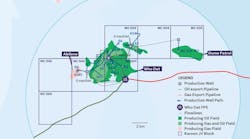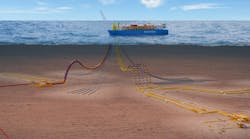Offshore staff
WASHINGTON, D.C. – The US Department of Interior has released two new rules that aim to “help improve drilling safety by strengthening requirements for safety equipment, well control systems, and blowout preventer practices” offshore by reducing the risk of human error.
The new Drilling Safety Rule and the new Workplace Safety Rule are part of the reforms DoI has undertaken since the Deepwater Horizonaccident.
The Drilling Safety Rule prescribes proper cementing and casing practices and the appropriate use of drilling fluids for well bore integrity. It also adds oversight of shut-in equipment, mainly BOP, shear ram, and pipe ram requirements, including ROV use. Operators also must get independent, expert review of well design, construction, and flow intervention mechanisms.
The Workplace Safety Rule requires a Safety and Environment Management System and makes API Recommended Practice 75 mandatory.
Additional rules are in the offing.
“Under these new rules, operators will need to comply with tougher requirements for everything from well design and cementing practices to blowout preventers and employee training,” said Ken Salazar, DoI secretary. “They will also need to develop comprehensive plans to manage risks and hazards at every step of the drilling process, so as to reduce the risk of human error.”
“These two rules are part of a broader series of reforms we are undertaking to reduce the risks of offshore energy operations,” said Michael R. Bromwich, director of the Bureau of Ocean Energy Management, Regulation and Enforcement (BOEM). “We are substantially raising the standards for all offshore operators, and are doing it in an orderly and responsible way. We will continue to move forward with other changes and reforms in what will remain a dynamic regulatory environment. We owe the public nothing less.”
10/01/2010




